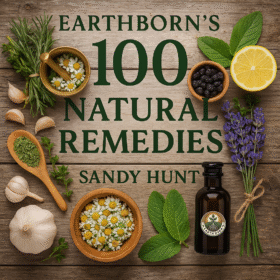-
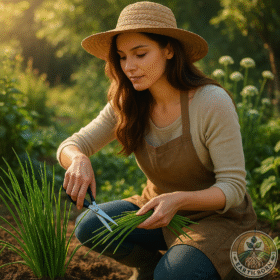
🌱A Grower’s Guide to Garlic Chives (Allium tuberosum)
🌱 Introduction and historyGarlic Chives, scientifically known as Allium tuberosum, are hardy perennials that have been cultivated for centuries across Asia, especially in China where they’re a staple in cuisine and traditional medicine. Also called Chinese Chives or Oriental Garlic, these flavorful herbs carry a delicate garlic aroma without the intensity of garlic bulbs. Today, they are celebrated worldwide for their culinary versatility, resilience in the garden, and wellness benefits. 💊 Medicinal BenefitsGarlic Chives are rich in beneficial compounds like Allicin, Vitamin C, and Selenium. These contribute to: Supporting healthy digestion Boosting the immune system Reducing inflammation Acting as mild… Read more…
-
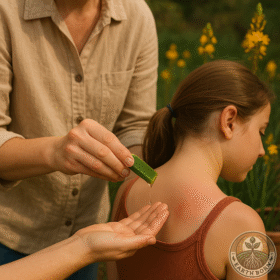
🌱 Bulbine Grower’s Guide (Bulbine frutescens)
🌱 Introduction and historyBulbine frutescens, commonly known as Stalked Bulbine or Snake Flower, is a hardy perennial succulent native to South Africa. A proud member of the Asphodelaceae family, it thrives in the veld and has long been valued for both its ornamental charm and powerful healing properties. Traditionally, it has been called the “living bandage” by communities who relied on its soothing gel for everyday wounds. 💊 Medicinal BenefitsBulbine is packed with anti-inflammatory, antibacterial, and antifungal compounds, particularly acetylated anthraquinones and chrysophanol. The fresh leaf gel is widely used to treat burns, cuts, rashes, insect bites, eczema, and sunburn.…
-
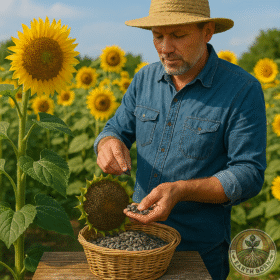
🌻 A Grower’s Guide to the Magnificent Sunflower (Helianthus)
🌱 Introduction and historyThe Sunflower (Helianthus annuus), belonging to the Asteraceae family, is one of the most beloved flowers worldwide. Native to North America, it was cultivated as early as 1000 B.C. by Indigenous peoples for its seeds, oil, and ceremonial use. Today, Sunflowers are not only admired for their striking beauty but also valued for their versatility in food, medicine, and ecological benefits. 💊 Medicinal BenefitsSunflowers are more than ornamental giants. Their seeds are packed with vitamin E, magnesium, selenium, and healthy fats, supporting heart health and lowering cholesterol. Traditional remedies use sunflower extracts for: Reducing inflammation Supporting skin…
-
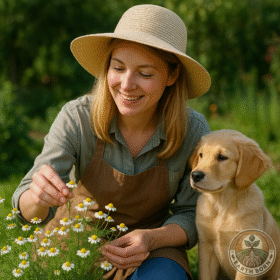
🌱German Chamomile (Matricaria chamomilla)
German Chamomile (Matricaria chamomilla), also called Wild Chamomile or Scented Mayweed, is a delicate annual herb from the Asteraceae family. With its daisy-like white petals and golden-yellow centers, it has been cultivated for centuries across Europe and Asia. Known for its sweet apple-like scent, chamomile was revered in ancient Egyptian, Greek, and Roman traditions as a calming and healing herb. Today, it remains one of the most popular medicinal plants worldwide. 💊 Medicinal Benefits German Chamomile contains active compounds such as chamazulene and apigenin, giving it powerful medicinal uses: 🌿 Anti-inflammatory – eases skin irritations, wounds, and joint pain. 🌿…
-
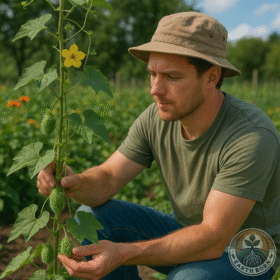
Bushu (Cucumis zambianus)
🌱 Introduction and history Bushu (Cucumis zambianus), also known as the African Wild Cucumber or Zambian Cucumber, is an annual climbing plant in the Cucurbitaceae family — relatives of gourds, melons, and cultivated cucumbers. Indigenous to Southern Africa, it grows naturally in South Africa, Zambia, and Zimbabwe, thriving in grasslands and along fences. Traditionally gathered from the wild, Bushu has been valued not only for its unique spiky green fruits but also for its medicinal and cultural uses. 💊 Medicinal Benefits In traditional African medicine, Bushu has been used for: Digestive support – Leaf infusions may relieve indigestion and mild…
-
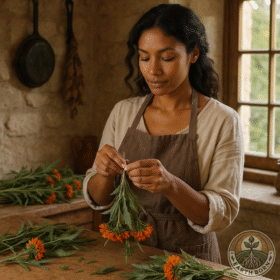
🌱Wild Dagga (Leonotis leonurus)
Wild Dagga (Leonotis leonurus), also called Lion’s Tail or Lion’s Ear, is a striking perennial shrub native to South Africa, particularly the Eastern and Western Cape, KwaZulu-Natal, and Free State. Wild dagga isn’t cannabis; it’s a South African indigenous shrub in the mint family, beloved by sunbirds and bees. It belongs to the mint family (Lamiaceae) and has been valued for centuries both for its ornamental beauty and its medicinal uses. Traditionally used by the Khoikhoi and San people, its vivid orange, tubular flowers resemble a lion’s tail, giving the plant its common name. 💊 Medicinal Benefits Wild Dagga is… Read more…
-
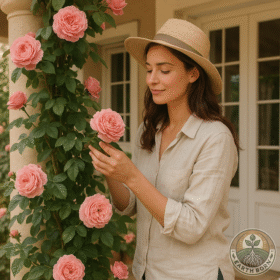
🌱Damask rose (Rosa damascena)
🌱 Introduction and history The Damask rose (Rosa damascena), often called the Rose of Castile, Summer Damask, Bulgarian Rose, Turkish Rose, or French Rose, is celebrated as the “Queen of Flowers.” Native to the Middle East, particularly Syria and Iran, it has spread widely across Europe and North Africa, including Morocco and Egypt. Cultivated for centuries, the Damask rose has been prized for its rich fragrance, essential oils, and symbolic value in medicine and culture. 💊 Medicinal Benefits Damask rose petals and essential oils contain beneficial compounds like citronellol and geraniol. These are widely used in aromatherapy to reduce stress,…
-
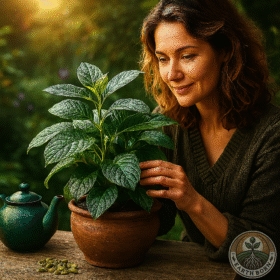
🌱Cardamom (Elettaria cardamomum)
🌱 Introduction and HistoryCardamom (Elettaria cardamomum), often called Green or True Cardamom, is a perennial herb native to the lush forests of southern India and Sri Lanka. Belonging to the ginger family (Zingiberaceae), this aromatic plant has been cultivated for over 4,000 years. Ancient Egyptians chewed the seeds as a tooth cleaner, while traders carried its prized pods along spice routes to Europe and Asia. Today, Cardamom remains one of the world’s most expensive spices by weight, treasured in both culinary and medicinal traditions. 💊 Medicinal BenefitsCardamom is celebrated for its digestive-supporting properties, helping to soothe bloating, indigestion, and nausea.…
-
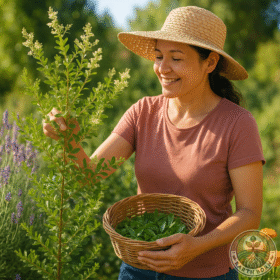
🌱Henna (Lawsonia inermis)
🌱 Introduction and history Henna (Lawsonia inermis) is a flowering perennial shrub treasured for millennia across North Africa, South Asia, and the Middle East. Known as Mehndi, Egyptian Privet, and Mignonette Tree, Henna’s leaves have been used to dye skin, hair, and textiles since ancient times. Archaeological evidence shows its application in ancient Egyptian mummification rituals over 5,000 years ago. Today, Henna remains a powerful cultural symbol of beauty, celebration, and healing. 💊 Medicinal Benefits Henna leaves contain Lawsone (2-hydroxy-1,4-naphthoquinone), a natural pigment with antifungal, antibacterial, and anti-inflammatory properties. Traditionally, powdered Henna paste is applied to soothe skin irritations, minor… Read more…
-

Cannabis Sativa (Cannabis sativa)
🌱 Intro 🌱 Introduction and history Cannabis sativa, often called Marijuana or Hemp, is a remarkable annual herb belonging to the Cannabaceae family. Originating in Central Asia, it is among the oldest cultivated plants on Earth, valued for thousands of years as a source of fibre, food, and medicine. In contrast to its close relative Cannabis indica, Sativa grows tall with narrow leaves and produces uplifting effects when used. Despite its rich heritage, Cannabis sativa became the target of prohibition campaigns in the 20th century. In South Africa and worldwide, strict bans were imposed under pressure from international treaties and…
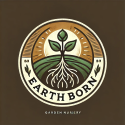

 **Meet Sprout!** Sprout is your friendly gardening companion at Earthborn, always ready with helpful advice on plant care, medicinal herbs, and natural gardening solutions. From seedling to harvest, Sprout provides expert guidance to nurture your garden and your well-being—making gardening easy, fun, and naturally rewarding.
**Meet Sprout!** Sprout is your friendly gardening companion at Earthborn, always ready with helpful advice on plant care, medicinal herbs, and natural gardening solutions. From seedling to harvest, Sprout provides expert guidance to nurture your garden and your well-being—making gardening easy, fun, and naturally rewarding.
